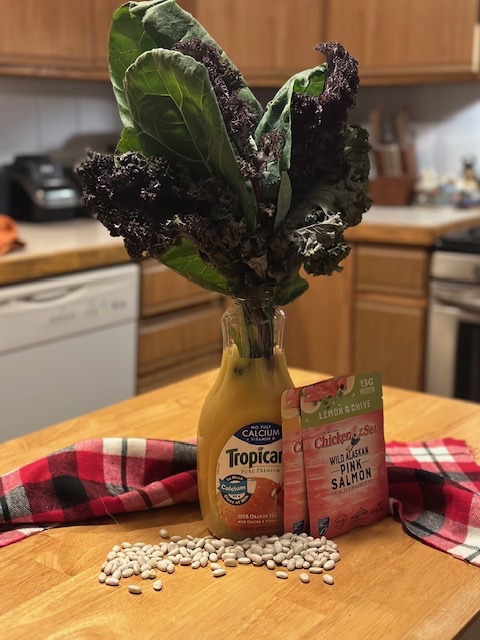
Vitamin D and calcium come hand in hand to strengthen bones, provide nutrients, and create increased gut health. Vitamin D allows calcium absorption in the small intestines, and without Vitamin D calcium would not be absorbed as easily. With living in Interior Alaska, you only see the sunlight every so often in the winter making it more difficult to get Vitamin D the natural way. A couple ways you can improve your bone health is to eat kale, collard greens, beans, fish, and drink some OJ! Before you know it, you’re bones will have that great thought exterior they do deserve.

Elizabeth Heinlein created this piece to explore the necessity of Vitamin D, and the problems that a lack of it can create. Living in interior Alaska or in Alaska in general, we notice a sharp decrease in the amount of sunlight we receive during the winter. This can lead to complications with our bones, as the sunlight that we are no longer receiving contains the vitamin D that we need to keep our bones healthy. As we know, our bones are extremely important for many things, such as blood flow, protection, and mineral processing. Without vitamin D, our body doesn’t process calcium very well. Because these two minerals and vitamins work together to fortify bones, a lack of them can result in problems such as decreased bone density. Fixing and preventing this problem is the main focus of this project. We can see in this picture that Elizabeth has collected several of the main types of foods and drinks that we should be consuming during the winter, essentially as a supplement for the missing sunlight. Pictured in her post above is orange juice, which has calcium, and if fortified properly, contains vitamin D. Also, in the orange juice, we see leafy greens, primarily kale, as well as fish (outside the bottle), and beans. All of which are helpful in bolstering levels of vitamin D and calcium. She also recommends trying to get outside for more sunlight, despite the snow and cold.
Word Count is 241.